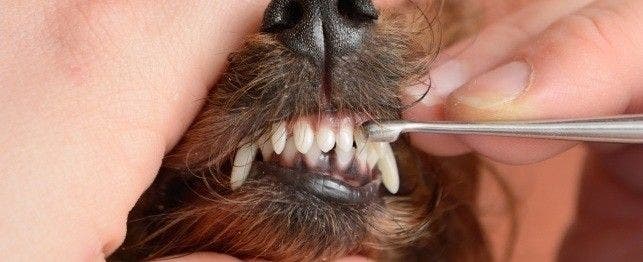
Veterinarians in Discordance over Anesthesia-Free Dentistry Ruling
Earlier this fall, in response to a widely growing prevalence of non-professional dental scaling, the American Animal Hospital Association (AAHA) voted to mandate that anesthesia with intubation must accompany any dental procedure performed at an AAHA certified hospital. The directive is enforceable through loss of certification in hospitals that do not comply with this and offer anesthesia-free dental cleanings.
The Reasoning Against Anesthesia-Free Dentistry
In humans, teeth cleaning is performed multiple times daily through brushing and flossing, removing food and plaque between the teeth and under the gum line. In addition, once or twice yearly, humans go to the dentist for an exam and a thorough teeth cleaning above and below the gum line. Even though we can let our dentist know areas of dental pain, thereby aiding the dentist in identifying trouble dental areas, most dental offices take annual x-rays for the dentist to better view inside our teeth and around the roots.
In veterinary medicine, an industry has sprouted around the fear of anesthesia as it relates to dentistry. Groomers offer weekly to monthly teeth brushings including chipping tartar off the teeth with dental instruments. In some cases, independent dental hygienists or veterinary technicians travel to veterinary offices to remove plaque and tartar from the teeth while the dogs and cats are awake. There are even national corporations dedicated only to non-anesthetic teeth cleaning. The American Veterinary Dental College has termed the procedure non-professional dental scaling (NPDS).
The main risk behind these anesthesia-free cleanings is that pet owners who have non-professional dental scalings performed are lulled into believing they are doing something good for their dog or cat while the deep periodontal pockets accumulate debris, the bad breath soon returns, and the dog or cat suffers. The procedure itself is also painful and stressful on the patient.
The Controversy
Most AAHA hospitals are already in compliance, however some veterinarians are upset with the ruling. They are standing behind a study that challenges the AAHA mandate requiring anesthesia and may lead to AAHA modifying their stance.
This pilot study was recently published in Integrative Veterinary Care Journal.
The study was conducted and designed with the president of the American Veterinary Dental College (AVDC) and initial findings reveal that dental cleanings done without general anesthesia are safe and effective in many cases. It is noteworthy that the president of the AVDC stepped away from the study as soon as he realized the study was “fatally flawed.”
The study’s credibility is somewhat weak because the study only looked at 12 cats and 12 dogs. With a sample size of only 24, there is no statistical significance. AAHA is currently sticking to their guns and is unimpressed with all the study lacks, even though the study found that all the animals tolerated the cleanings without complications. Veterinary dental experts maintain that trouble areas were missed and that non-anesthetic dental scaling procedures remain useless.
Some of the AAHA members are threatening to drop their AAHA accreditation but AAHA does not appear to be caving. AAHA reiterates that anesthesia is considered to be safe and most effective in allowing the veterinarian to clean, polish, x-ray, probe and treat any abnormalities uncovered. AAHA also reports that the vast majority of their members are happy with the mandate. While AAHA is open to further studies that examine non-anesthetic dental scalings, they currently believe their mandate is in the patient’s best interest, which is their primary focus.
Did You Know? Anesthesia is considered very safe. In a study conducted by Banfield Animal Hospitals, only one in 10,000 patients experienced an adverse event.